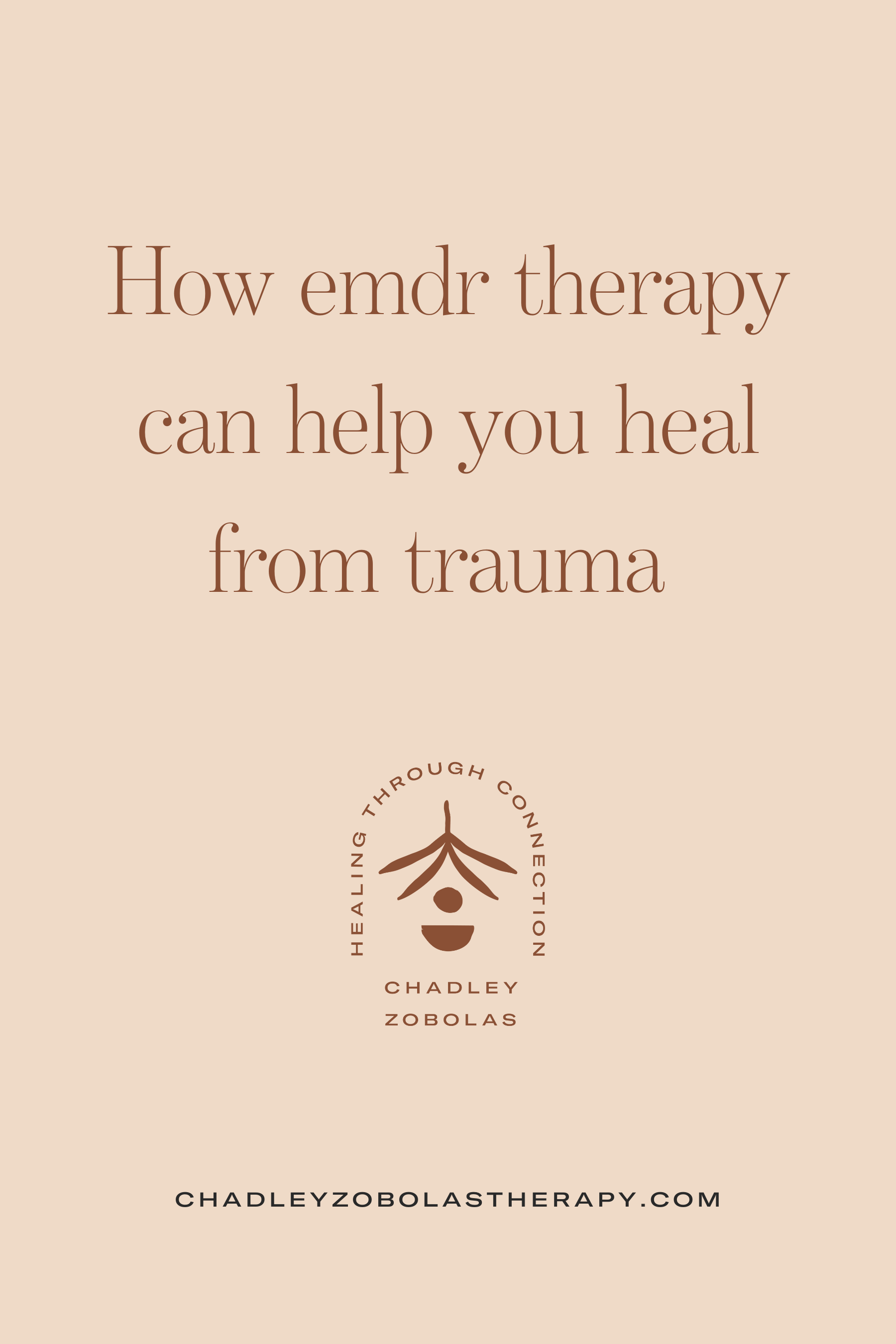How EMDR Therapy Can Help You Heal From Trauma
EMDR therapy has become a really popular approach for treating issues related to trauma, such as PTSD, anxiety, and depression related to traumatic experiences, difficulties with self-confidence and relationships, and more. And it’s for a good reason! EMDR, which stands for Eye Movement Desensitization and Reprocessing, can be a really powerful tool in therapy to help you heal and move forward from traumatic or difficult experiences.
What is EMDR?
So what is EMDR? There are a few different parts of this therapy, and some of them will sound very familiar if you’ve worked with a therapist before. In EMDR, you and your therapist start by working on things like coping skills, meditation and mindfulness, grounding techniques, and helping you identify the supportive people in your life. These are all really important tools to help you feel safe and able to manage stressors in your life and will be helpful once you have to start working on the trauma itself. As you feel more and more confident with these skills, you and your therapist then start talking more about the traumatic experiences that are bothering you.
In EMDR, we often focus not just on what seems to be the capital “T” Trauma, but on how that experience affected the things you believe about yourself and how you think and feel about yourself. Your therapist might also help you connect the dots between different experiences throughout your life that have some important similarities.
Through this whole process, it will still feel very much like talk therapy. This gives you time to get to know and trust your therapist and practice your coping skills in a safe environment.
The Nuts and Bolts of EMDR
Once this foundation is laid, it’s often time to start desensitization and reprocessing. EMDR uses a technique called bilateral stimulation (BLS). It’s a very technical-sounding word but a simple concept. BLS means that you stimulate one side of your brain, then the other, alternating back and forth. This can be as simple as walking, or tapping your right hand on your right leg, and then your left hand on your left leg. Most EMDR therapists use one of 3 methods for BLS in the therapy room: moving your eyes back and forth by following a light machine or the therapist’s hands, listening through headphones to a sound that alternates between ears, or holding little buzzers that gently buzz back and forth. None of these methods are invasive or painful in any way, and many people find them soothing.
While BLS can be relaxing by itself, that isn’t the whole picture! BLS is a tool that your therapist uses while processing past traumatic events with you, through images and memories, body sensations, thoughts, and feelings. Your therapist is always there to guide you through and support you no matter what comes up. Behind the scenes, BLS helps your brain process these difficult memories in a new way that allows them to not feel so intrusive or painful. People often describe this as the memory “losing its charge” or “losing its heat.” EMDR doesn’t erase memories and it’s not hypnosis. It helps the memories go back to the past where they belong instead of causing you significant difficulties in the present day.
Healing the Whole Person: EMDR Therapy in Denver, CO.
As memories become less charged (desensitized), your therapist will also help you reprocess those memories with thoughts, feelings, and beliefs about yourself that are more accurate and helpful. This is the part of the process that can feel most healing and help you truly start to move forward. You’ll also spend a lot of time paying attention to your body throughout EMDR. This can feel a little weird at first, and that’s okay! There is plenty of neuroscience research to show that trauma really is stored in our bodies just as much, if not more than, our intellectual minds and our emotions. EMDR treats the whole person so that your whole self moves forward, not just your brain. Some people even experience relief from chronic aches and pains through this process.
EMDR can be a powerful part of therapy and has helped countless individuals work through traumatic experiences that used to control their lives. If you’re starting to think about getting support for trauma in therapy, all of our therapists at CZ Therapy Group are trained in EMDR and can help you determine if it’s the right path for you. We’re located in the Platt Park neighborhood of Denver, Colorado, and are here to help you find healing and freedom on the other side of trauma.
Healing From Trauma Through Connection: Reach Out To Our Denver EMDR Therapists
Our team of EMDR therapists in Denver, CO are trained to support clients through any and all forms of trauma. If trauma is impacting your life, relationships, and view of yourself, it might be helpful to explore more about EMDR Therapy or reach out to an EMDR trauma therapist on our team for a free consultation.
FOLLOW THESE THREE SIMPLE STEPS TO GET STARTED:
Reach out to schedule a free 20-minute consult call.
Connect with the CZTG therapist of your choice via a phone consult.
Begin healing and growth in weekly emdr therapy.

